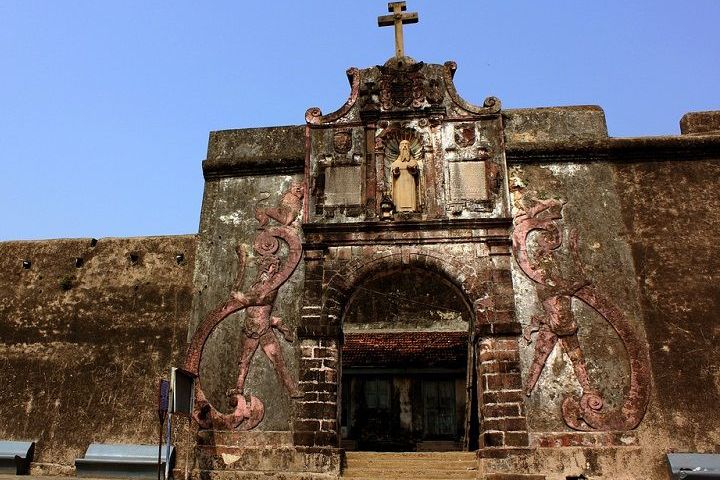

“They please the world most, who please Christ least.”
Daman was taken from its Gujarati ruler by the Portuguese in 1531 but was only officially handed over to the Portuguese in 1559 by Bahadur Shah, the Sultan of Gujarat. Diu became a Portuguese colony in 1539 after the signing of a peace treaty by the Sultan of Gujarat, Bahadur Shah. The territories remained Portuguese colonies till they were freed in 1961. A visit to the historical place of St.Jerome Fort in Daman will give you a clear insight about the history of the place.
As you enter the complex of Daman Fort of St.Jerome you shall first notice the opulent gateway facing the river with a large statue of St. Jerome who was one of the most renowned priests of the Catholic Church. St. Jerome, who was born Eusebius Hieronymous Sophronius, was the most scholarly of the Fathers of the Western Church. He was born about the year 342 at Stridonius, a small town at the head of the Adriatic. The principal building inside the fort is the impressive Church of Our Lady of the Sea. This Catholic Church is one of the earliest seats of office and has an excellent altar with superb paneling. The ramparts are a good place from which to take a clear view of the fish market and small fishing fleet which anchors alongside.
Also called the Fort of St Jerome, Nani Daman is situated on the bank of Daman Ganga river. It is a small fort with high and elegant stone walls, three bastions and two huge gateways. Spread over an area of about 12,250 sq m, the fort boasts two magnificent human figurines. Deriving its name from St Jerome of the Catholic order, the fort is home to a splendid statue of the saint at the front gate and houses a Catholic Church of Our Lady of the Sea that is known for its refined panelling. Other attractions near the fort include Gandhi Park, lying near the Nani Daman Jetty






